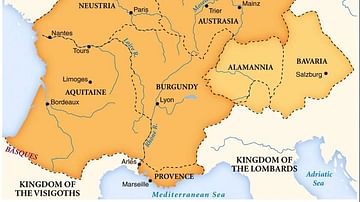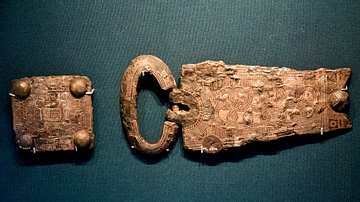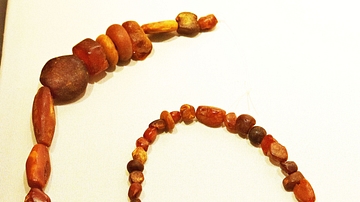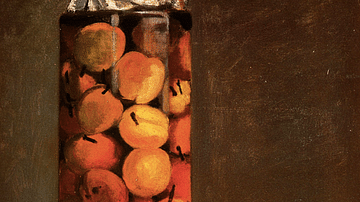Illustration
The Franks continued to produce glass vessels and wheel-made pottery using Roman methods, but the finer skills were lost and glassware became a luxury, used only at high status feasts. Roman glass-making centers in the Rhineland (Western Germany) apparently survived but some moved to smaller workshops in the country side. This jar is one of a group of vessels which represents the type being made at this time. This wheel-turned grey ware displays a row of individual rosette stamps above its shoulder. Merovingian, 6th century CE. Found in a grave at St. Severinus Church, Cologne, North Rhine-Westphalia, Germany. (The British Museum, London).
About the Author
Cite This Work
APA Style
Amin, O. S. M. (2016, October 04). Merovingian Jar. World History Encyclopedia. Retrieved from https://www.worldhistory.org/image/5789/merovingian-jar/
Chicago Style
Amin, Osama Shukir Muhammed. "Merovingian Jar." World History Encyclopedia. Last modified October 04, 2016. https://www.worldhistory.org/image/5789/merovingian-jar/.
MLA Style
Amin, Osama Shukir Muhammed. "Merovingian Jar." World History Encyclopedia. World History Encyclopedia, 04 Oct 2016, https://www.worldhistory.org/image/5789/merovingian-jar/. Web. 18 Apr 2025.








